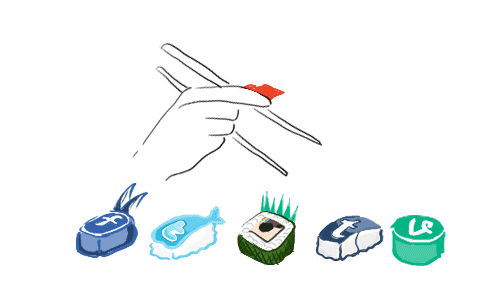
A little History...
Like the only evil genius to ever successfully ‘take over the world’, social media has spread like wild fire, forming an obsession with anyone capable of working a smart phone with an Internet connection. Since the first initial sign of online interaction began with sites such as the Whole Earth ‘Lectronic Link, or better known as The WELL, which was launched in 1985 as an dial-up bulletin board, social media has slowly but surely developed into the most popular thing online, besides porn of course.
Since the days of screaming at your Mother for picking up the landline whilst chatting to your crush on AOL Instant Messenger (1997), social media has become much more than a way to chat to your BFFs. The launch of MySpace in 2003 saw the birth of a new form of social networking that concentrated on a particular theme, music. Following MySpace’s early success came Mark Zuckerberg’s network juggernaut, Facebook (2004), which was originally created for Harvard College students. Bebo (Blog Early Blog Often) was launched a year after Facebook, which eventually proved to be less within the favour of social networkers, and then came social media for the more reserved, Twitter. Launching in 2006, Twitter was the first micro-blogging site that enabled users to broadcast and receive 140-character messages, labeled tweets. Following Twitter, a similar micro-blogging site arose in 2007, Tumblr was a simply designed haven for Hipsters, or people with too many feelings to broadcast their emotions accompanied with pictures and videos to a community of fellow bloggers. From micro-blogging social media became even more compact with the boom of the mobile social network sites. Instagram’s launch in 2010 saw the first sign of a mobile-based social media platform which allowed users to snap pictures of things like their cats, dinners and scenery, and apply various filters to make their smart phone photography even more arty. Three years later in January 2013 Vine was debuted by the big bosses at Twitter as a ‘a mobile service that lets you capture and share short looping videos’. Vine, which soon became a mobile hub for six second rants, less than hilarious pranks and inventive animations, has become another format for viral celebrities who rake in the dollar for surprising close friends with happy slaps (Smack Cam) or wearing a superhero mask around the house (BadDad).
The boom of social media and its extremely handy mobile formats has seen an explosion of viral content. With sites such as Redditt, Know Your Meme, and even Buzzfeed using clever little calculations called algorithms to discover and document social media trends and phenomena as they happen, internet users can now, not only create viral content themselves, but have tools to keep track of forthcoming online trends. From selfies to vines, social media is the place to be if you want to start and prolong and online trends. This promotes the question, what makes a viral phenomeno, where do they sprout from, and how do they maintain the success to keep popping up on our monitors?




